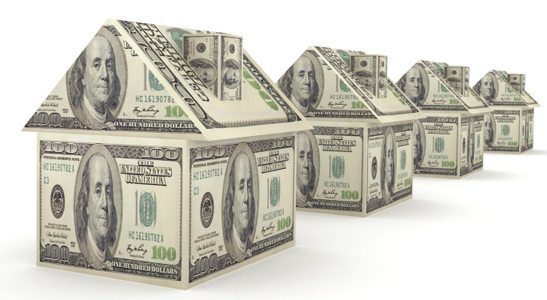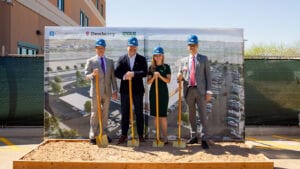Even though the median Phoenix-area home price shot up by more than a third last year, we can expect area prices to keep soaring in 2013. That’s according to a new housing report from the W. P. Carey School of Business at Arizona State University, which offers the latest numbers for Maricopa and Pinal counties, as of January:
The median single-family home price went up 35.3 percent — from $120,500 to $163,000 – between January 2012 and January 2013.
The very limited supply of homes available for sale in the lower price range is expected to keep pushing prices higher.
Foreclosures went up somewhat in January, but it’s believed to be a normal, post-holiday-season bump that is already reversing.
Home prices have risen dramatically in the Phoenix area since reaching a low point in September 2011. The median single-family home price actually went slightly down between December 2012 and January 2013, but it’s expected to be a tiny blip on the radar. The new report by Mike Orr, director of the Center for Real Estate Theory and Practice at the W. P. Carey School of Business, says low inventory will keep forcing home prices higher in the Phoenix area this year.
“The recent decline was predicted in our last report and is a seasonal effect,” explains Orr. “Pricing is almost always weaker in January, but February signals the start of peak buying season that lasts until the end of June. Make no mistake – prices are going to rise significantly during this period. There is nowhere else for them to go until a significant new source of active listings enters this supply-constrained market.”
The median single-family home price was already up 35.3 percent – from $120,500 to $163,000 – from January 2012 to this January. Realtors will note the average price per square foot went up 28.5 percent at the same time. The median price of a townhouse/condominium went up a whopping 45 percent – from $70,000 to $101,500.
Sales activity fell 12 percent from January to January, largely because of the lack of inexpensive homes available for sale. At the higher end of the market, sales are up somewhat from last year, but at the low end, multiple bidders face tough competition for few homes. Discounted, “distressed supply” – like homes from foreclosures and short sales — dropped 38 percent from the beginning of February 2012 to the beginning of February 2013. Overall, the number of single-family homes for sale priced under $150,000 (without a signed contract) is only a 43-day supply. Still, this is better than the 18 days of inventory available in June.
“We still have a long-term supply shortage with only about 50 percent of the active listings (without contracts) that we would expect to see in a normal market,” says Orr. “Consequently, the trend is for prices to continue to rise across most sectors. Most homes priced reasonably below $500,000 continue to attract multiple offers in a short time. Sellers are firmly in control.”
Since the number of bargain foreclosed homes and short sales available is generally dropping, many buyers are turning to alternatives like new-home sales, which are up an incredible 61 percent this January from last January. New-home construction permits are up 42 percent from a year ago. Home builders bought up a massive 2,272 lots in December to help meet demand. However, the trend dropped off in January, with only 143 lots changing hands, so Orr says the sales appear to have been timed for tax purposes by sellers concerned about paying higher tax rates in 2013.
Also, investor purchases are declining slowly after peaking in late summer, and Orr anticipates they will decline further as fewer bargains can be found. The percentage of investor purchases in Maricopa County dropped from 39.2 percent in January 2012 to 31.8 percent this January. Orr adds he doesn’t think large investors are driving the market as much as some analysts would have you believe.
“Some commentators have suggested that the presence of large investors is causing the recent price rise,” says Orr. “This vastly exaggerates their effect on our market. Large investors account for only around 8 percent of purchases, and if they disappeared overnight, there still would not be enough homes on the market to satisfy the small investors, second-home buyers and regular owner-occupiers.”
Foreclosures and foreclosure starts (homeowners receiving notice their lenders may foreclose in 90 days) went up a little from December to January. However, this is a normal yearly occurrence, because banks typically pull back on foreclosures during the holiday season. Completed foreclosures on single-family homes and condos were still down 45 percent this January from last January. Foreclosure starts went down 33 percent at the same time.
Orr’s full report, including statistics, charts and a breakdown by different areas of the Valley, can be viewed at http://wpcarey.asu.edu/finance/real-estate/upload/Full-Report-201302.pdf. A podcast with more analysis from Orr is also available from knowWPCarey, the business school’s online resource and newsletter, at http://knowwpcarey.com/index.cfm?cid=13.




